
How to Use Stepper Motor: Examples, Pinouts, and Specs
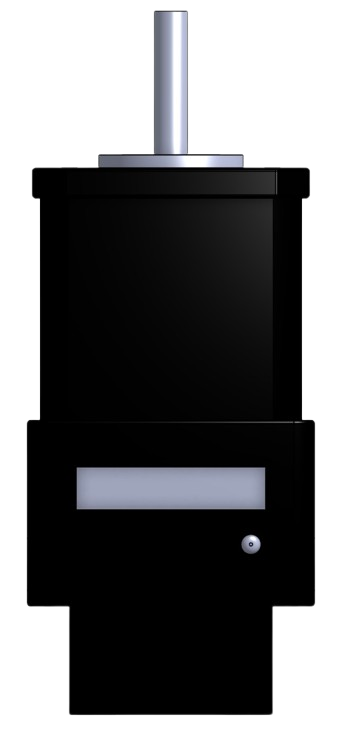
 Design with Stepper Motor in Cirkit Designer
Design with Stepper Motor in Cirkit DesignerIntroduction
The STP-MTRD-17038E is a high-performance stepper motor manufactured by Automation Direct. This motor is designed to divide a full rotation into a large number of discrete steps, enabling precise control of angular position, speed, and acceleration. Stepper motors are widely used in applications requiring accurate positioning and repeatable motion control.
Explore Projects Built with Stepper Motor
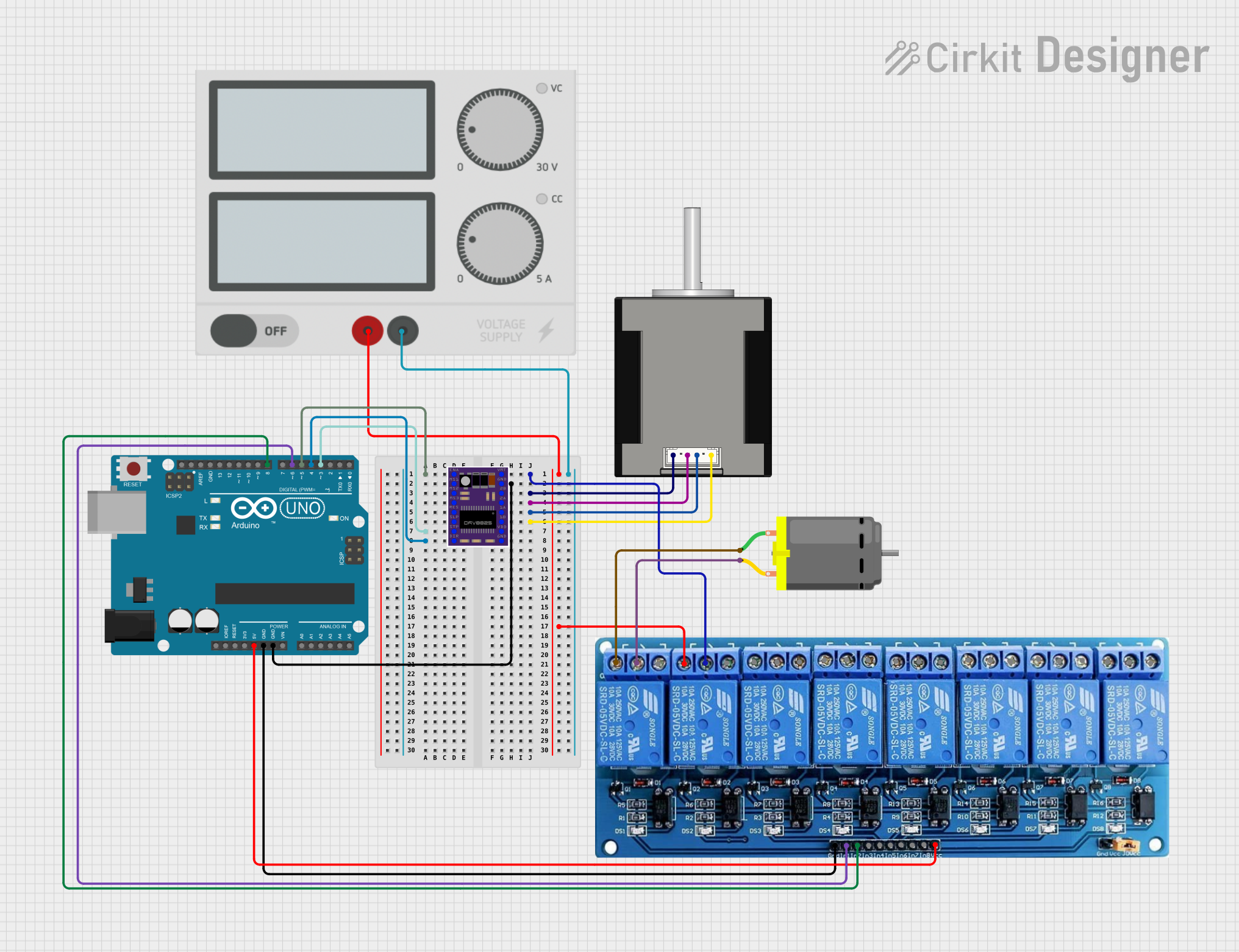
 Open Project in Cirkit Designer
Open Project in Cirkit Designer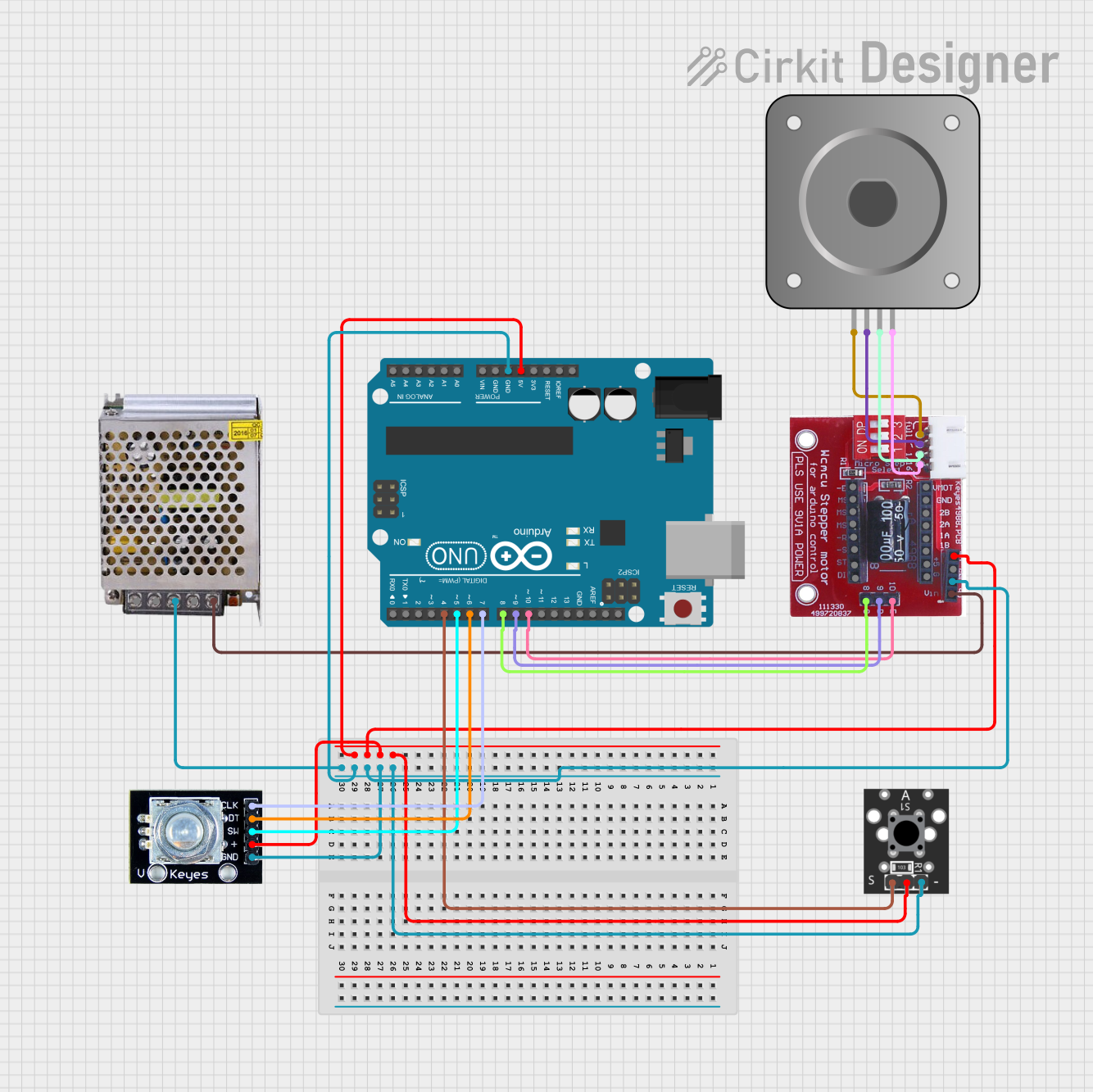
 Open Project in Cirkit Designer
Open Project in Cirkit Designer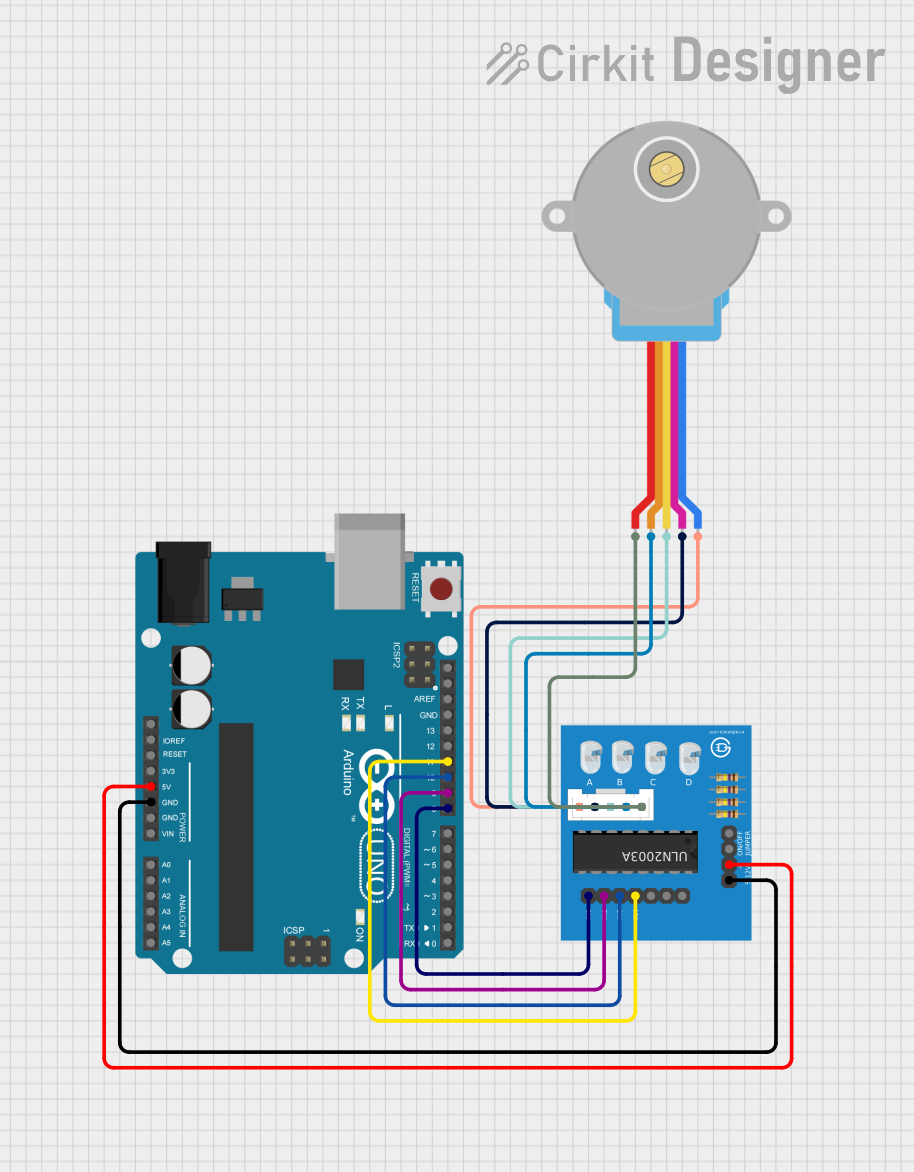
 Open Project in Cirkit Designer
Open Project in Cirkit Designer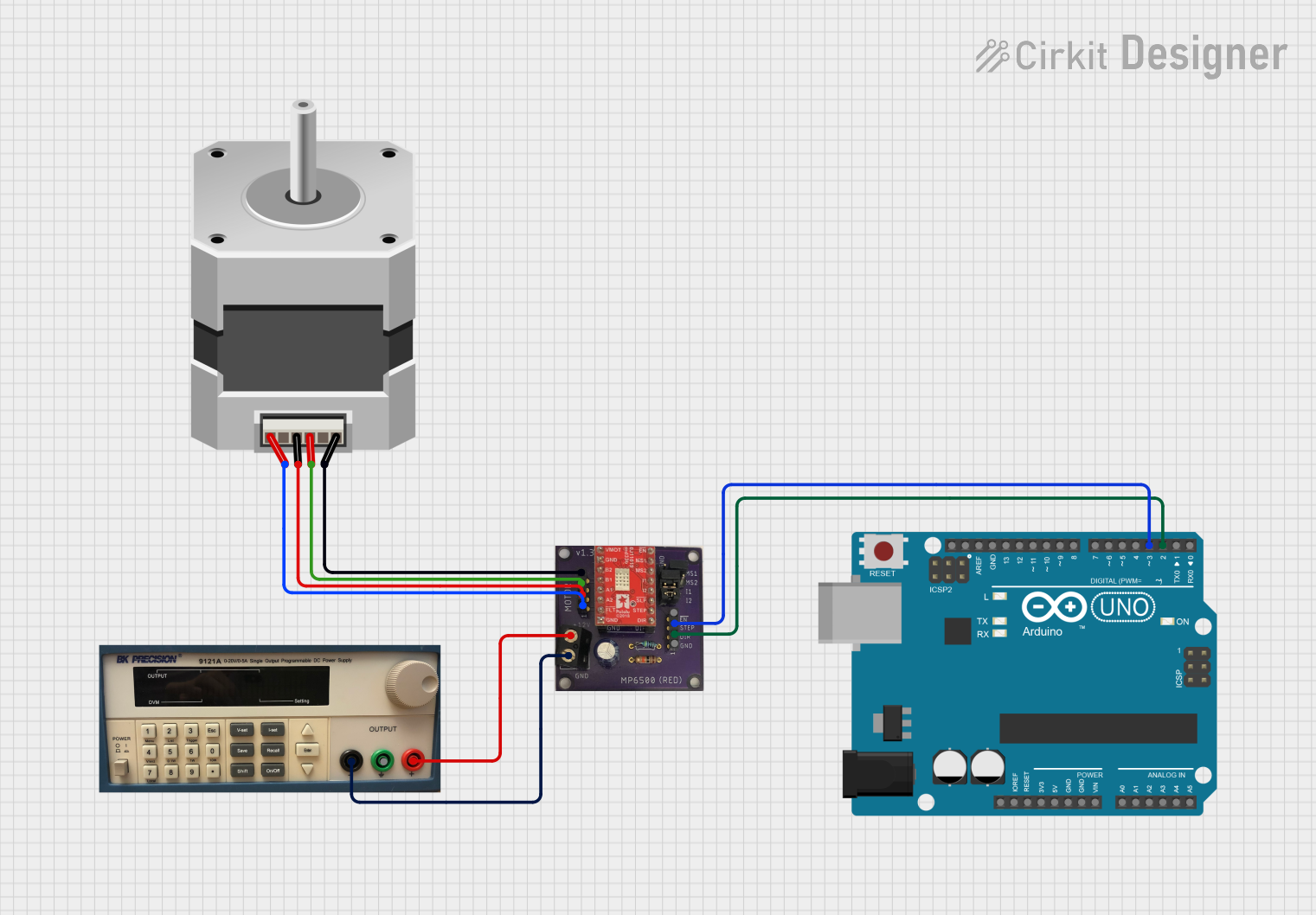
 Open Project in Cirkit Designer
Open Project in Cirkit DesignerExplore Projects Built with Stepper Motor

 Open Project in Cirkit Designer
Open Project in Cirkit Designer
 Open Project in Cirkit Designer
Open Project in Cirkit Designer
 Open Project in Cirkit Designer
Open Project in Cirkit Designer
 Open Project in Cirkit Designer
Open Project in Cirkit DesignerCommon Applications and Use Cases
- 3D printers and CNC machines
- Robotics and automation systems
- Camera gimbals and pan-tilt mechanisms
- Industrial equipment requiring precise motion control
- Medical devices such as syringe pumps and imaging systems
Technical Specifications
The following table outlines the key technical specifications of the STP-MTRD-17038E stepper motor:
| Parameter | Value |
|---|---|
| Manufacturer | Automation Direct |
| Part Number | STP-MTRD-17038E |
| Step Angle | 1.8° per step |
| Holding Torque | 425 oz-in (3.0 Nm) |
| Rated Current per Phase | 2.8 A |
| Voltage | 2.55 V |
| Resistance per Phase | 0.91 Ω |
| Inductance per Phase | 3.6 mH |
| Number of Leads | 4 |
| Shaft Diameter | 8 mm |
| Motor Frame Size | NEMA 17 |
| Weight | 1.1 lbs (0.5 kg) |
Pin Configuration and Descriptions
The STP-MTRD-17038E is a 4-wire bipolar stepper motor. The pinout and wiring details are as follows:
| Wire Color | Function | Description |
|---|---|---|
| Red | Coil A+ | Positive terminal of Coil A |
| Blue | Coil A- | Negative terminal of Coil A |
| Green | Coil B+ | Positive terminal of Coil B |
| Black | Coil B- | Negative terminal of Coil B |
Usage Instructions
How to Use the Stepper Motor in a Circuit
- Power Supply: Ensure the motor is powered by a suitable power supply that matches its voltage and current requirements. A stepper motor driver is typically required to control the motor.
- Driver Connection: Connect the motor to a compatible stepper motor driver. For example, the Automation Direct STP-DRV-4850 is a suitable driver for this motor.
- Microcontroller Interface: Use a microcontroller (e.g., Arduino UNO) to send step and direction signals to the driver. The driver will translate these signals into precise movements of the motor.
- Wiring: Connect the motor wires to the driver as per the pin configuration table above. Ensure proper polarity to avoid incorrect operation.
Important Considerations and Best Practices
- Current Limiting: Set the current limit on the driver to match the motor's rated current (2.8 A per phase) to prevent overheating.
- Step Resolution: Configure the driver for the desired microstepping resolution (e.g., full step, half step, 1/8 step) based on your application's precision requirements.
- Cooling: Ensure adequate ventilation or cooling for the motor and driver during operation to avoid thermal issues.
- Back EMF Protection: Use diodes or other protection mechanisms to safeguard the driver and power supply from back EMF generated by the motor.
Example Code for Arduino UNO
Below is an example of how to control the STP-MTRD-17038E stepper motor using an Arduino UNO and a stepper motor driver:
// Include the Stepper library
#include <Stepper.h>
// Define the number of steps per revolution for the motor
#define STEPS_PER_REV 200 // 1.8° step angle = 200 steps per revolution
// Initialize the Stepper library with the motor's step count and pin connections
// Pins 8 and 9 control Coil A, Pins 10 and 11 control Coil B
Stepper stepperMotor(STEPS_PER_REV, 8, 9, 10, 11);
void setup() {
// Set the motor speed (in RPM)
stepperMotor.setSpeed(60); // 60 RPM
// Initialize serial communication for debugging
Serial.begin(9600);
Serial.println("Stepper Motor Test");
}
void loop() {
// Rotate the motor 1 full revolution clockwise
Serial.println("Rotating clockwise...");
stepperMotor.step(STEPS_PER_REV);
delay(1000); // Wait for 1 second
// Rotate the motor 1 full revolution counterclockwise
Serial.println("Rotating counterclockwise...");
stepperMotor.step(-STEPS_PER_REV);
delay(1000); // Wait for 1 second
}
Notes on the Code
- The
Stepperlibrary is used to simplify motor control. - Adjust the
setSpeed()function to change the motor's speed. - Ensure the motor driver is properly connected to the Arduino and powered.
Troubleshooting and FAQs
Common Issues and Solutions
Motor Not Moving
- Cause: Incorrect wiring or loose connections.
- Solution: Double-check the wiring and ensure all connections are secure.
Motor Vibrates but Does Not Rotate
- Cause: Incorrect step sequence or driver configuration.
- Solution: Verify the step sequence and ensure the driver is configured correctly.
Overheating
- Cause: Current limit set too high or insufficient cooling.
- Solution: Adjust the current limit on the driver and ensure proper ventilation.
Skipping Steps
- Cause: Excessive load or insufficient torque.
- Solution: Reduce the load or increase the motor's torque by adjusting the current limit.
FAQs
Q: Can I use this motor with a unipolar driver?
A: No, the STP-MTRD-17038E is a bipolar stepper motor and requires a bipolar driver.Q: What is the maximum speed of this motor?
A: The maximum speed depends on the driver, power supply, and load. Typically, stepper motors can achieve speeds of several hundred RPM under optimal conditions.Q: Can I run this motor without a driver?
A: No, a stepper motor driver is required to properly control the motor's steps and direction.Q: How do I determine the correct wiring for the coils?
A: Use a multimeter to measure resistance between wires. Wires with the lowest resistance belong to the same coil.
This documentation provides a comprehensive guide to using the STP-MTRD-17038E stepper motor effectively. For further assistance, refer to the manufacturer's datasheet or contact Automation Direct support.